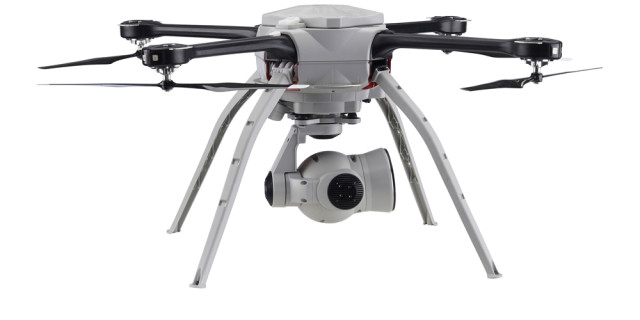Drawing upon its work integrating unmanned air vehicle use into the UK Air Accidents Investigation Branch’s (AAIB) wreckage assessments, Cranfield University is in discussions with international bodies exploring the use of the technology for post-crash analysis.
The accident laboratory at Cranfield has been working on safely integrating UAVs into crash site investigations. A year ago, a five-strong team at the AAIB adopted its methods, with the success potentially influencing other nations.
Pete McCarthy, lecturer in human factors and accident investigation at the university, says investigation bodies in Nepal have shown interest, and Cranfield is in talks with the Singapore and Australian air accident boards to adopt unmanned technology into their analyses.
UAVs are forward-deployed by the AAIB to carry out a risk assessment of crash sites, collecting HD video and imagery that can be stitched together to form a 3D map of the area. Geotagging of pieces of wreckage for identification purposes can also be carried out, a task usually completed by hand.
“They’ve used it more often than not,” McCarthy says. UAVs have also been used in a similar role by law enforcement bodies, he says, notably by the Sussex police force in the UK, following the crash of a Hawker Hunter at Shoreham in August.
Four new Aeryon SkyRanger UAVs have been acquired by the Sussex force, it announced on 8 April, for combined operations with neighbouring Surrey police. These add to the one example it has been operating since 2014 supporting the policing of London Gatwick airport.
The acquisition has the backing of the Civil Aviation Authority (CAA), and has attracted £250,000 ($356 million) in funding.
Assistant chief constable Steve Barry, head of operations for the force, says: “We have invested significantly in training 38 operators to CAA-accredited standard to give us every opportunity to use drones when appropriate to do so, to critically assess the benefits.
“Our project, operating five drones, is by far the largest in the UK, and there are a number of forces around the country that are commencing drone trials and the information from their trials will be incorporated into our report.”
A range of DJI vertical take-off and landing UAVs are used to carry out the AAIB’s research, but McCarthy is keen to integrate fixed-wing systems into these investigations, as they could provide more range and endurance.
“We hope this will happen sooner rather than later,” he says, while adding beyond-line-of-sight operations “would be key” to full-scale use of UAVs in this application.
Information is routinely passed between the AAIB and Cranfield, and the Military Aviation Authority is also involved in using the technology for wreckage assessment.
“As the equipment is becoming safer, with collision avoidance and so on – we can use them more,” McCarthy says.
Source: Flightglobal

